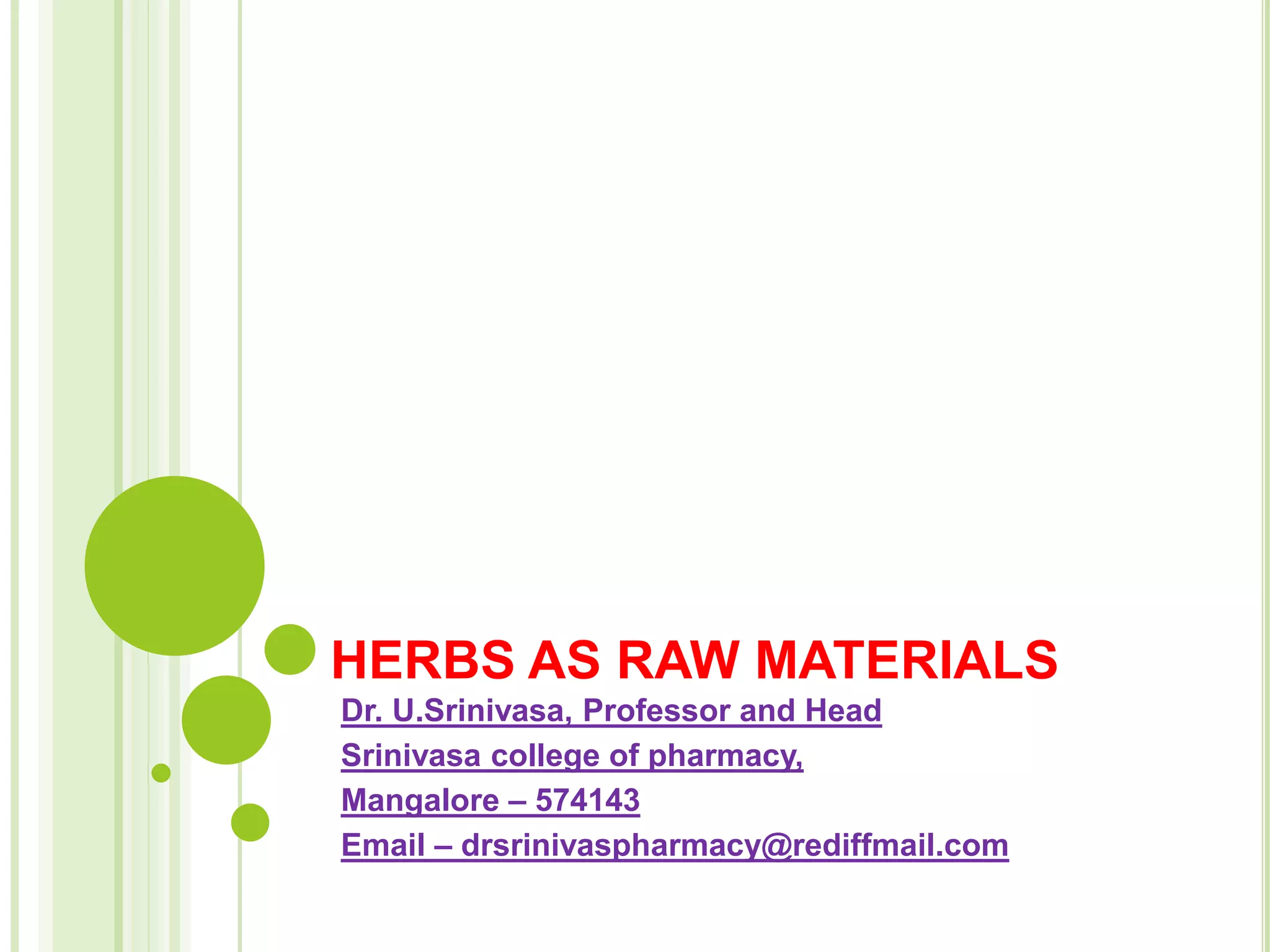This document discusses herbs and herbal materials used as raw materials in herbal medicine. It defines what an herb is from a pharmacological perspective and distinguishes medicinal herbs from botanical terms. The document outlines the key differences between herbal and conventional medicines. It also describes the various types of herbal materials, preparations, and finished products that can be made from herbs. Finally, it discusses the important steps involved in the selection, identification, processing and production of herbal raw materials.











































